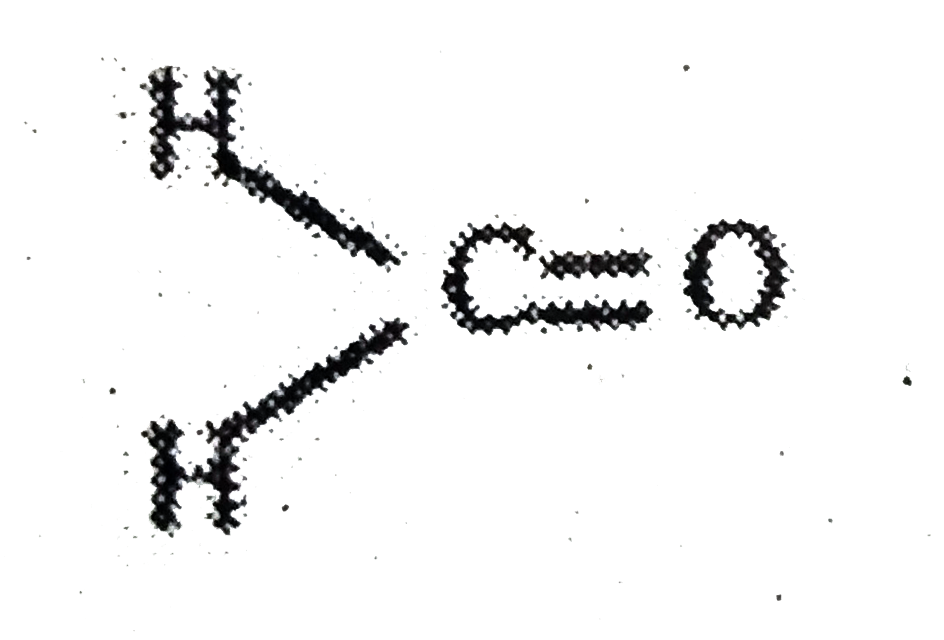All fluorine atoms are in same plane in
CHF3
CIF3
XeOF4
All of these
The correct Answer is:D
To determine in which of the given compounds all fluorine atoms are in the same plane, we will analyze the molecular geometry of each compound provided in the options.
1. Analyzing CHF3 (Chloroform)
- The central atom is carbon (C).
- Carbon is bonded to three fluorine (F) atoms and one hydrogen (H) atom.
- The molecular geometry around carbon is tetrahedral due to the four substituents.
- However, since hydrogen is less electronegative, it will be positioned above the plane formed by the three fluorine atoms.
- Conclusion: All three fluorine atoms are in the same plane.
2. Analyzing CIF3 (Chlorine Trifluoride)
- The central atom is chlorine (Cl).
- Chlorine is bonded to three fluorine (F) atoms and has one lone pair.
- The molecular geometry is also tetrahedral due to the four regions of electron density (three F atoms and one lone pair).
- The lone pair will occupy one position, and the three fluorine atoms will be arranged in a plane.
- Conclusion: All three fluorine atoms are in the same plane.
3. Analyzing XeOF4 (Xenon Oxyfluoride)
- The central atom is xenon (Xe).
- Xenon is bonded to one oxygen (O) atom (with a double bond) and four fluorine (F) atoms.
- The molecular geometry is square planar due to the arrangement of four fluorine atoms around xenon.
- In a square planar geometry, all four fluorine atoms lie in the same plane.
- Conclusion: All four fluorine atoms are in the same plane.
4. Final Conclusion
- Since all three compounds (CHF3, CIF3, and XeOF4) have their fluorine atoms in the same plane, the correct answer is:
- Option D: All of the above.
- The central atom is carbon (C).
- Carbon is bonded to three fluorine (F) atoms and one hydrogen (H) atom.
- The molecular geometry around carbon is tetrahedral due to the four substituents.
- However, since hydrogen is less electronegative, it will be positioned above the plane formed by the three fluorine atoms.
- Conclusion: All three fluorine atoms are in the same plane.
- The central atom is chlorine (Cl).
- Chlorine is bonded to three fluorine (F) atoms and has one lone pair.
- The molecular geometry is also tetrahedral due to the four regions of electron density (three F atoms and one lone pair).
- The lone pair will occupy one position, and the three fluorine atoms will be arranged in a plane.
- Conclusion: All three fluorine atoms are in the same plane.
- The central atom is xenon (Xe).
- Xenon is bonded to one oxygen (O) atom (with a double bond) and four fluorine (F) atoms.
- The molecular geometry is square planar due to the arrangement of four fluorine atoms around xenon.
- In a square planar geometry, all four fluorine atoms lie in the same plane.
- Conclusion: All four fluorine atoms are in the same plane.
- Since all three compounds (CHF3, CIF3, and XeOF4) have their fluorine atoms in the same plane, the correct answer is:
- Option D: All of the above.
Similar Questions
Assertion:In formaldehyde, all the four atoms are in the same plane

Reason:The carbon atom in formaldehyde is sp3 hybridized
View SolutionWhich of the following type of energies are involved in Born Haber's cycle?
View SolutionAmongst the given option, the compound(s) in which all the atoms are in one plane in all the possible conformations (if any), is/are
View SolutionAccording to VSEPR theory, in which species do all the atoms lie in the same plane ?
1.CH+3 2.CH−3
View SolutionHow many atoms lie in the same plane in the major product (C) ? (Where A is the alkyne of lowest molecular mass)

View SolutionHow many atoms lie in the same plane in the major product (C) ? (Where A is the alkyne of lowest molecular mass)

View SolutionHow many maximum atoms lie in the same plane in the structure of methylenesulphurtetrafluoride (CH2SF4) ?
View SolutionThe second ionisation potentials in electron volts of oxygen and fluorine atoms are respectively given by
View SolutionThe maximum number of atoms which lie in the same plane in B2H6 molecule is :
View SolutionStatement-1 : Most of the reactions of fluorine are exothermic.
Statement-2: Fluorine atom is smaller in size and forms strong bonds with other elements and has low dissociation energy of the F-F bond.
View Solution
